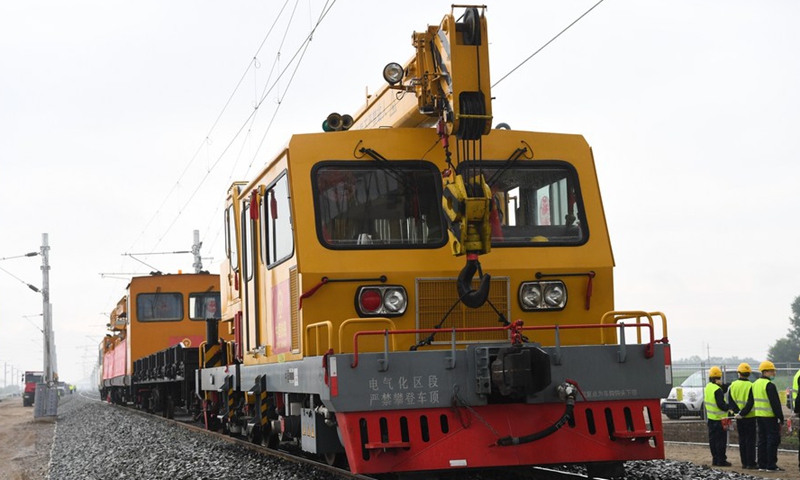
Photo taken on May 30, 2020 shows the construction site of the Belgrade-Budapest railway in Stara Pazova, Serbia.Photo:Xinhua
Officials from both Serbia and Hungary held an inauguration ceremony to celebrate the start of the operation of a section of the Belgrade-Budapest railway, a flagship project under the China-proposed Belt and Road Initiative (BRI), according to a news release on the website of China's Embassy in Serbia.
The 80-kilometer section, which links Belgrade and Novi Sad, the capital and second-largest city of Serbia, is part of the 341-kilometer Belgrade-Budapest railway, which has a designed speed of 200 kilometers per hour, the statement noted.
On Saturday, Serbian President Aleksandar Vucic, Hungarian Prime Minister Viktor Orban as well as other government officials took the train at the Belgrade railway station. Just 33 minutes later, the train arrived at the station at Novi Sad, and was warmly welcomed by local residents.
According to the statement, the Belgrade-Novi Sad section is composed of two parts, and one of them was built by China Communications Construction as well as China Railway International in the form of engineering, procurement, and construction contracts.
Chinese companies were also in charge of building the communication and signaling engineering in this section.
The railway, which is an important project under the BRI, shows the uninterrupted progress of the initiative despite difficulties such as the COVID-19 pandemic and geopolitical tensions.
Data from the Ministry of Commerce showed that China's trade with countries along the BRI route surged to an eight-year high of 11.6 trillion yuan ($1.82 trillion) in 2021, accounting for nearly one-third of China's total trade.
The Belgrade-Budapest railway project is also a successful model of transnational cooperation, as companies from multiple countries have been participating in the project.
Apart from China, Russian companies participated in the railway's construction. German companies installed surveillance equipment, while the trains were manufactured in Switzerland, the Xinhua News Agency revealed.
Global Times




